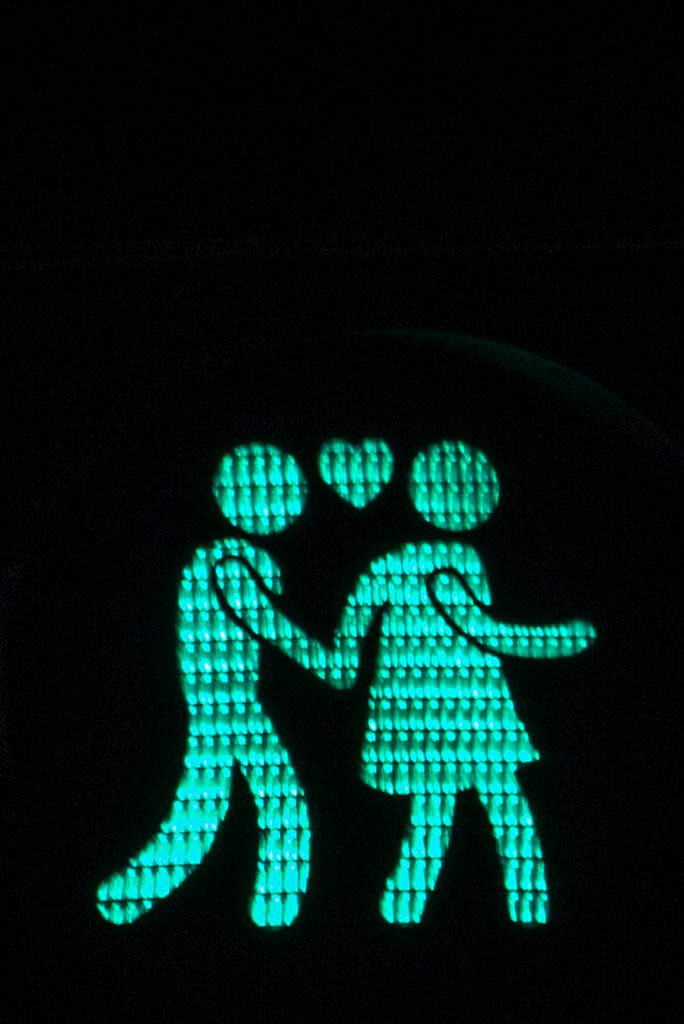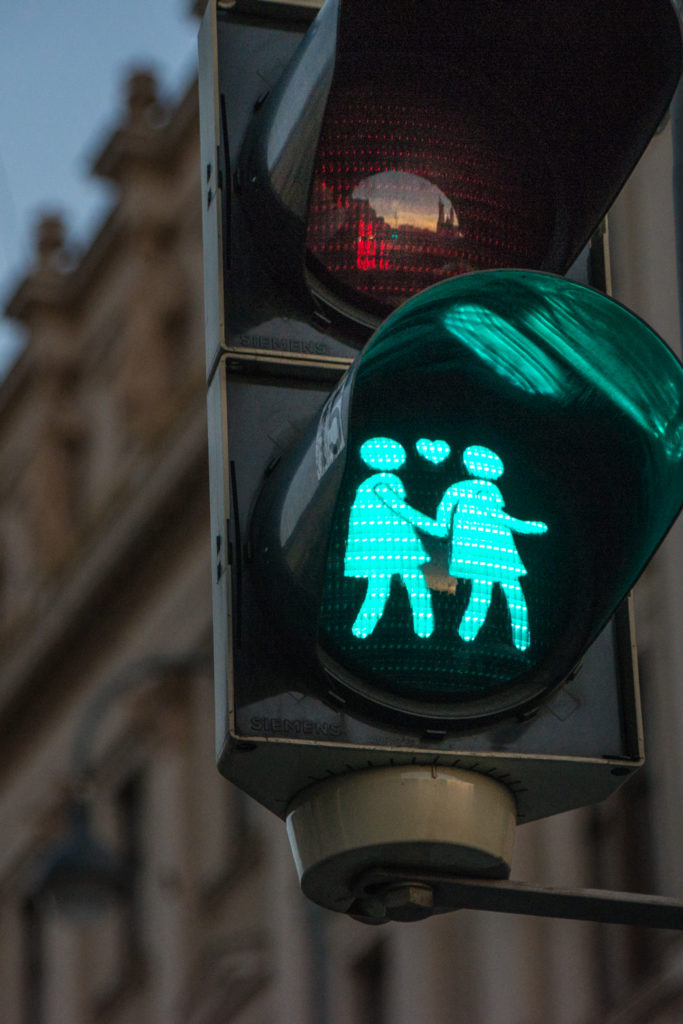
In 2015, the city of Vienna introduced new traffic lights. On 47 inner city crossings, the common stick figure was replaced by red and green couples that came in three different versions: lesbian, gay and heterosexual. The new traffic lights applied equally to all jaywalkers, regardless of their sexual orientation: walk/don’t walk, gay or not.
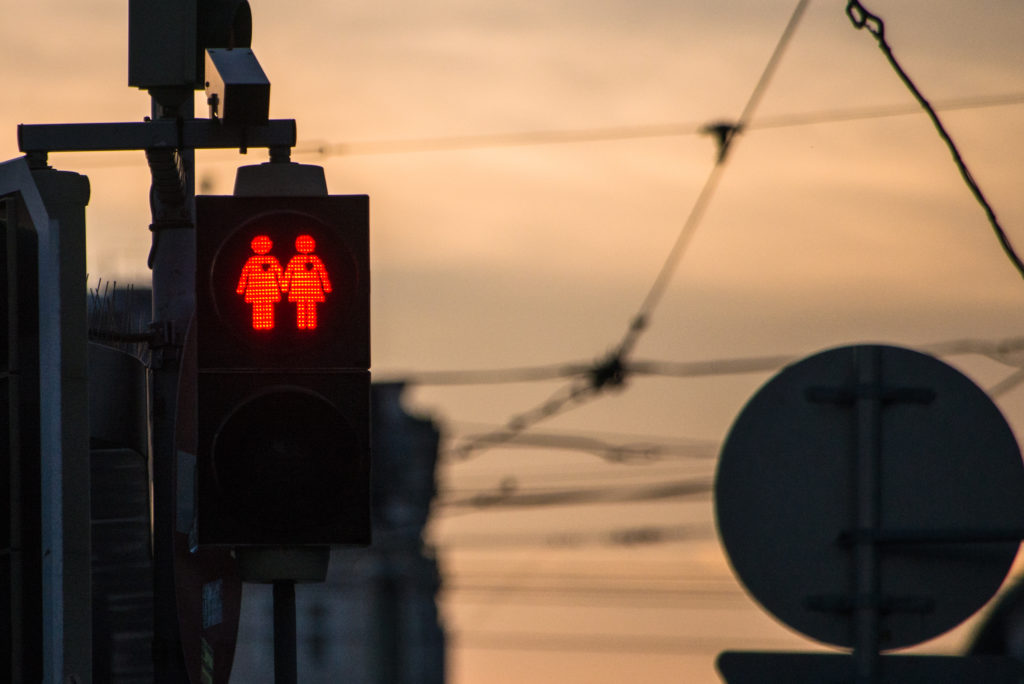
Initially, the traffic light couples were installed only temporarily as a marketing gag to support the annual Life Ball, a glamorous, celebrity-studded charity event to raise funds for HIV-research and anti-AIDS campaigning. Carried by a wave of enthusiasm after the bearded drag queen “Conchita Wurst” had won the Eurovision Song Contest the previous year, the city council attempted to place Vienna on the map of gay-friendly and liberal cities.
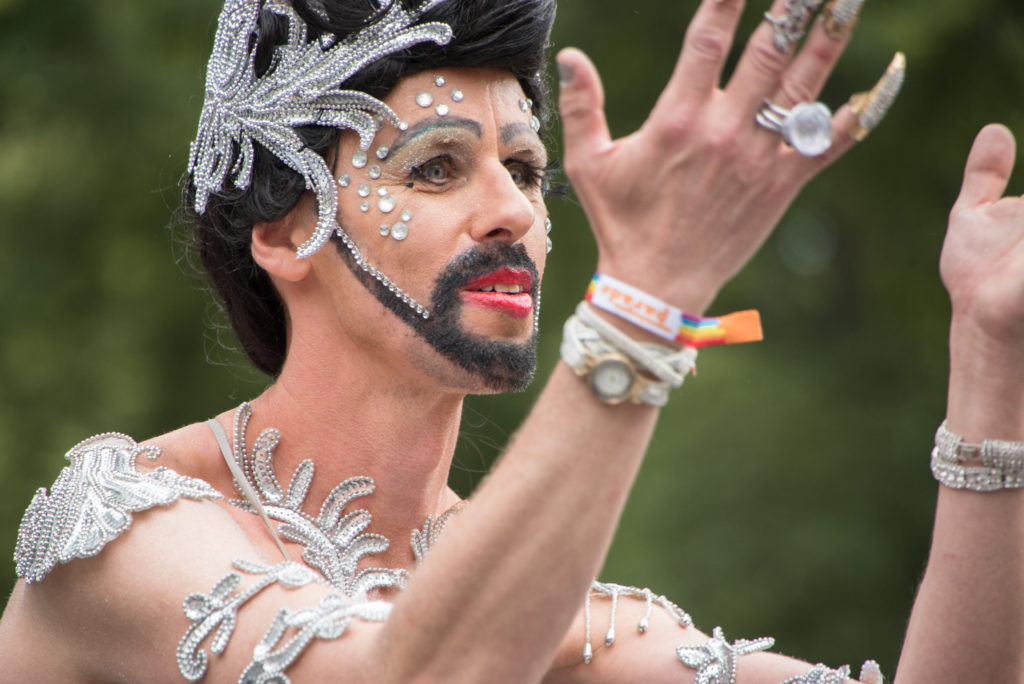
The traffic lights caused a bigger stir than expected. Covered by media around the globe, the concept and design of the so-called Ampelpärchen were even sold to other cities like Munich. A relatively modest investment of purported 63,000.- Euros generated a much larger financial revenue and, of course, a large touristic benefit.
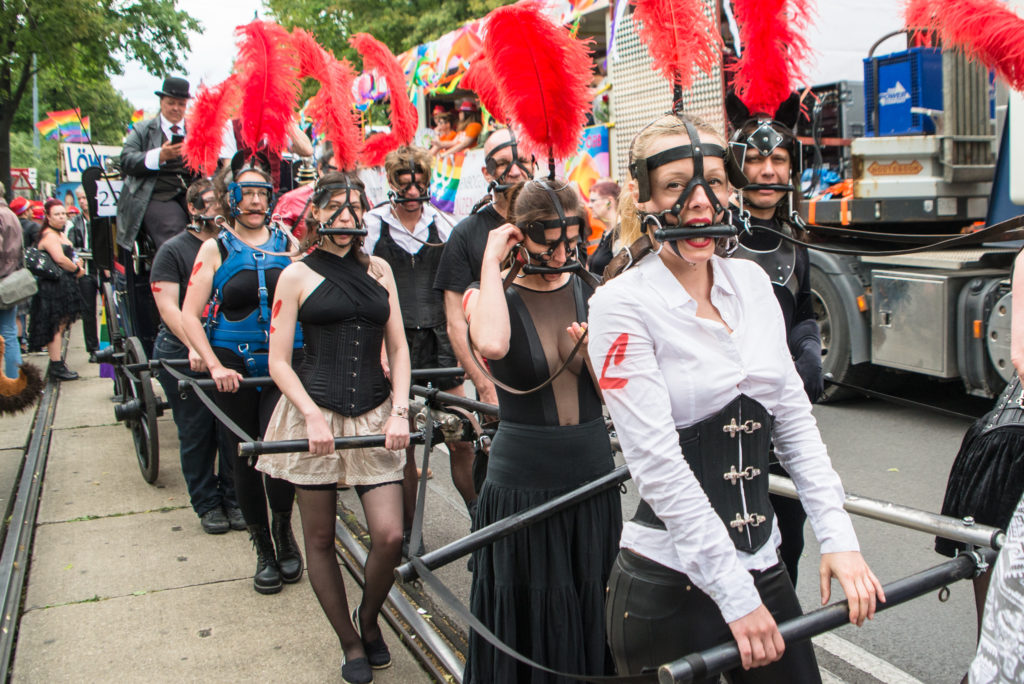
Not surprisingly, the political right demanded the traffic lights couples’ immediate removal and threatened to sue the responsible politician, the green vice-mayor, for slander of tax money and/or moral decline. The vice-mayor defended the couples: Being novelties, she argued, they would attract more attention from jay-walkers, who were then more likely to obey traffic rules.
The Ampelpärchen stayed for good. Locals are mostly approving, or indifferent by now. The Viennese, law-abiding by nature, accept traffic signals of any sexual orientation, which does not make Vienna the gayest city in the world, but definitely one the safest.
